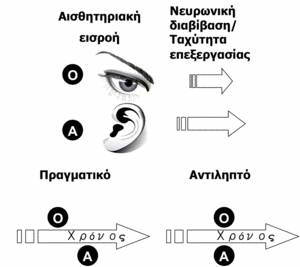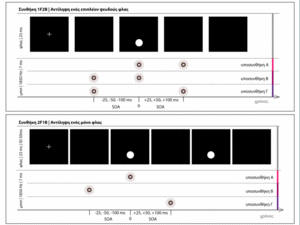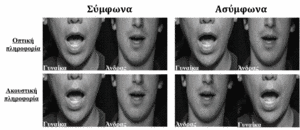
Each sensory system (vision, hearing, touch) requires a different amount of time to process stimuli. It remains unknown how the information from different systems is combined to create the perception of a single, synchronized multisensory event. How does the system decide whether two sensory inputs (e.g., auditory and visual speech) belong to the same or different events? The ability of the perceptual system to overcome temporal differences in the arrival of information is a central issue of study in the perception of multisensory events.

The double-blink illusion is an example of multisensory integration, in which an auditory stimulus dominates and modifies the visual perception of an audiovisual event. In this illusion, a single visual stimulus (blink) accompanied by two short sounds is perceived as double. Our studies show that the phenomenon is due to the competition created between the different number of stimuli presented in the two modalities, regarding which stimulus will be combined with which.

The spatial and temporal proximity of sensory input increases the likelihood of their classification into the same perceptual event. How is information belonging to different events properly integrated? What determines which information “fits” and thus will ultimately be integrated? Is the association based on “low-level” features (time, space, physical features, causality) or on “high-level” features (meaning, learning outcomes)?